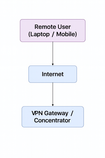Strengthening BGP with TTL Security: A Simple Yet Powerful Defense
- The Itvue Team
- Jul 18
- 3 min read
Author: Ermias Teffera
In the world of enterprise and service provider networks, Border Gateway Protocol (BGP) serves as the backbone of global Internet routing. Yet, despite its critical role, BGP is notoriously vulnerable to certain attacks — especially those originating from spoofed or unauthorized sources. One underused but highly effective protection mechanism is TTL Security, also known as BGP TTL Hack or GTSM (Generalized TTL Security Mechanism).
Let’s break down what TTL Security is, why you should care, and how to implement it to protect your BGP sessions.
What Is TTL Security in BGP?
By default, BGP uses TCP port 179 to establish sessions between peers. However, this connection is based on IP and TCP handshakes that don’t inherently verify if the peer is physically or logically close. That opens the door to TCP-based attacks like spoofing, session hijacking, and DDoS amplification — particularly from distant attackers.
This is where TTL (Time To Live) Security comes in.
TTL Security checks the TTL value in incoming TCP packets. Since the TTL is decremented by each router hop, you can estimate how far away a packet’s source is. When configured, TTL Security ensures that only peers within a certain number of hops (usually 1) are allowed to form or maintain BGP sessions.
Why Use TTL Security?
Defense Against Spoofed Sessions: Attackers can't spoof a BGP session unless they are within one hop of your router.
Minimal Overhead: TTL Security is simple to deploy and doesn't require any major architectural change.
Complementary Security: It adds a layer of security on top of TCP MD5 authentication or IP ACLs, reinforcing your BGP setup.
Protection at the Transport Layer: Since this mechanism works at the IP level (not just BGP), it can mitigate certain TCP-layer attacks that are invisible to higher-layer protocols.
How Does It Work?
In a typical BGP session with TTL Security:
You configure your router to send BGP packets with TTL set to 255.
The receiving router checks that the TTL of incoming BGP packets is exactly 255 - N, where N is the number of expected hops (usually 1).
If the TTL is outside this range, the packet is dropped, and the session is never established.
This effectively limits BGP communication to directly connected peers, blocking attempts from further away.
Real-World Example (Cisco & Juniper)
On Cisco:
bash
router bgp 65001
neighbor 192.0.2.2 ttl-security hops 1
On Juniper:
bash
set protocols bgp group ebgp ttl 1
set protocols bgp group ebgp multihop ttl 255
Best Practices for TTL Security
Always use with eBGP: It’s most useful in external BGP sessions, where peers are typically one hop away.
Use in conjunction with MD5 authentication: TTL Security prevents off-path attacks, while MD5 defends against in-path spoofing.
Monitor BGP logs: Misconfigurations or legitimate topology changes (like an inserted firewall hop) can cause legitimate sessions to drop.
Document TTL expectations: Keep track of hop counts in multi-vendor or complex environments to avoid mismatched settings.
Conclusion
TTL Security is a low-effort, high-reward security control that significantly strengthens your BGP posture. In an era of increasing BGP-related attacks — including route leaks, hijacks, and session resets — simple tools like TTL Security can make a big difference.
If your network relies on BGP, there’s no reason not to implement TTL Security today. It’s another layer in your defense-in-depth strategy — and sometimes, one hop is all it takes to keep the bad guys out.










Comments